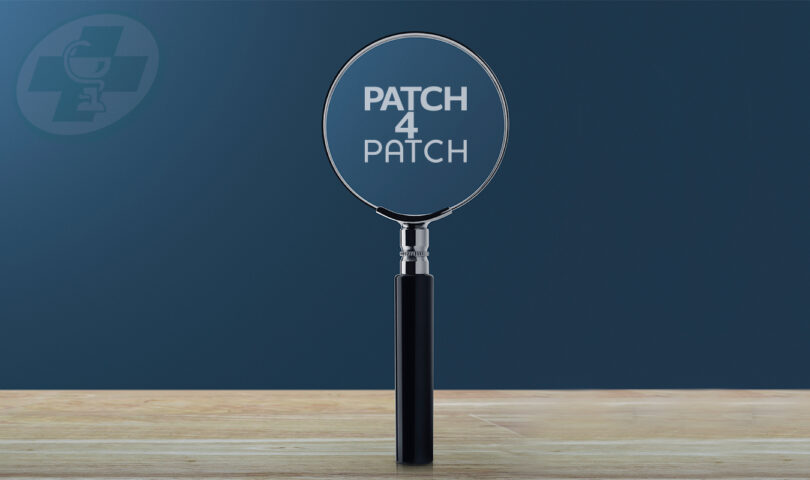The College asked Detective Constable Chris Auger of the OPP Drug Enforcement Unit Prescription Drug Diversion to provide some tips on what pharmacists can quickly look for when determining whether a returned fentanyl patch has been altered or counterfeited.
On October 1, 2016, the Safeguarding Our Communities Act (Fentanyl Patch for Patch Return Policy) came into effect. Shortly after the enactment of the Patch for Patch program, pharmacies and policing communities started seeing counterfeit patches being returned. The reasons for this diversion might have been legitimately lost patches and attempting to replace them, deliberate misuse or trafficking. The types of counterfeit returns are diverse. Some of the original counterfeit returns were easy to spot, a clear material, such as packing tape, placed on the patch return sheet to mimic a returned patch.
As the program has been established, pharmacists and law enforcement officers have gotten better at recognizing the counterfeits. However, there is still a need to assist one another in regards to these investigations. The regulation section that directly involves law enforcement is found in section 4(3) of the regulation.
The section is as follows:
3. The dispenser may contact a law enforcement agency in Canada if he or she has reasonable grounds to believe that the missing patches or the suspected counterfeiting, misuse or tampering relate to a contravention of the laws of Ontario or Canada and may disclose to the agency,
i. the name of the patient and, if applicable, the name of any authorized representative who attended the pharmacy on behalf of the patient,
ii. the fact that some used fentanyl patches are missing or the dispenser’s belief that the fentanyl patches returned to the pharmacy are counterfeit, have been misused or have been tampered with, as the case may be, and
iii. any other information that the dispenser reasonably believes will aid in an ongoing investigation by the agency or that will enable the agency to determine whether to conduct an investigation for the purpose of a law enforcement proceeding or from which a law enforcement proceeding is likely to result.
(2) A dispenser who notifies a prescriber in accordance with subsection (1) shall document the notification in the dispenser’s record of the patient.
The police will investigate under fraud or uttering a forged document, based under sections 380 and 368(1) the Criminal Code of Canada and, after securing the suspected counterfeit patches, may use judicial authorizations (i.e. production order or search warrant) in order to secure additional supporting documentation (prescription history, medical records etc.)
Under Ontario’s Patch for Patch program, patients who receive a prescription for fentanyl must return their used patches to a pharmacy before receiving new ones. The legislation places certain obligations upon pharmacists to ensure that only patients with legitimate prescriptions are receiving fentanyl patches and that these patients are receiving the intended benefit of the therapy. Pharmacists are expected to examine returned patches for signs of counterfeiting, tampering or diversion. The College’s Patch for Patch Fentanyl Return Program Fact Sheet provides additional details.
IDENTIFYING COUNTERFEIT PATCHES
When officers perform searches they might come across patches that appear to be valid and used the main characteristic is that you can see what is likely hair or skin detail.
Counterfeit fentanyl patches often do not possess any hair or skin detail along the edges that a worn or used patch would possess. They appear to be clean and fresh. They are often created using a metal template to accurately size them to the specifications of the various patch sizes. The ink is placed on by way of a printer. A common mistake is that the patches have an incorrect marking.
A good rule to remember is the Locards exchange principle of forensic science which states that a perpetrator will always bring something into a crime scene and leave with something from it. In the case of counterfeit patches, they should have some detail that they were present on a person’s skin. And although the person exchanging patches may say that they washed the patches, there would still be presence of some detail of usage on the adhesive.
The colour and abbreviation used for labelling on the returned patches can be observed for inconsistencies. As well a printer error might indicate counterfeiting, such as where a laser printer coloured the bottom left hand corner of the patch with two small lines. The colour and placement of the abbreviation should match that of the original product.
Another common form of diversion with fentanyl patches is the cutting of edges so that a portion of the patch can be misused but a majority is placed back on the return sheet. Take time to know the measurements of the patches made by each company. Fentanyl patches are made to be very durable and do not reduce in size even when exposed to body temperature.
The police in your community want to help prevent the diversion of prescription narcotics and want to see prescription medication only used therapeutically for any of your patients. We understand that by working together we can give the support needed to assist with any diversion related incidents and reduce the amounts of diverted prescription narcotics in our communities.
Any questions about a possible diverted patch or diverted medication or fraud please contact me at chris.auger@opp.ca or (519)494-1043.
Related stories
Safety and Security for Pharmacies: Preventing Robberies













